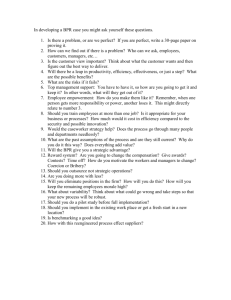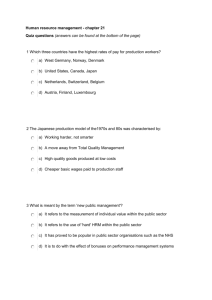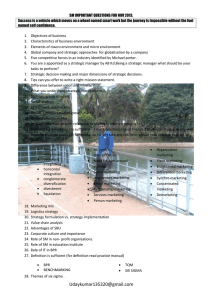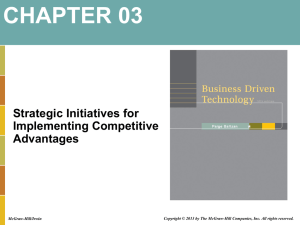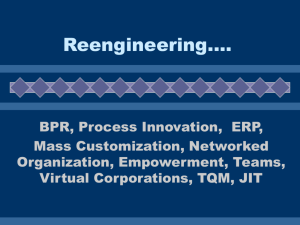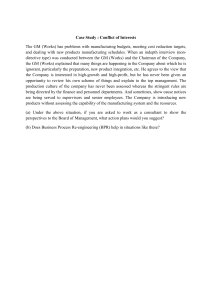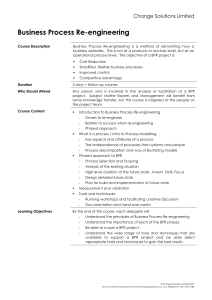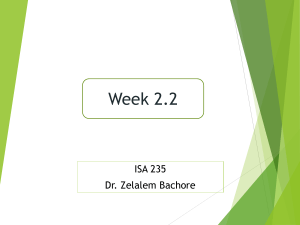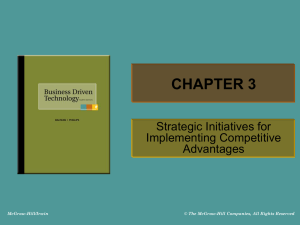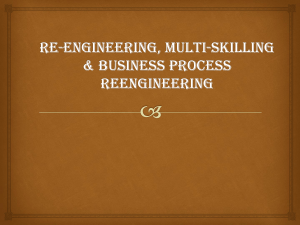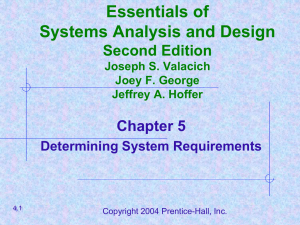SYSTEMS ANALYSIS
advertisement
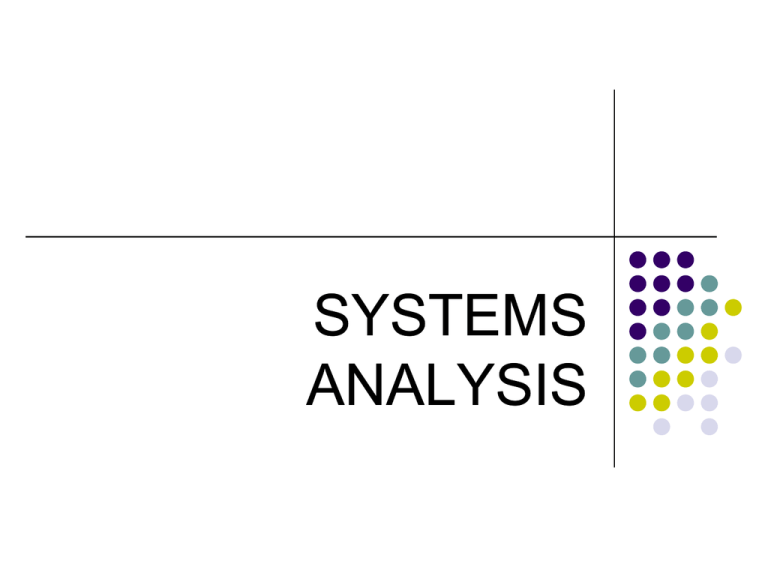
SYSTEMS ANALYSIS REASONS WHY A COMPANY CHANGES IT’S AIS : 1. 2. 3. 4. 5. 6. 7. 8. Changes in user or business needs Technological changes Improves business processes Competitive advantage Productivity gains Growth Downsizing Quality improvements STRATEGIES FOR DETERMINING REQUIREMENTS 1. 2. 3. 4. Ask users what they need Analyze existing systems Examine existing system utilization Prototyping (the iterative process of looking at what is developed and then improving it continues until users agree on their needs. The main effect IT in a business is IT can provide radical changes in process data and save the data. BUSINESS PROCESS REENGINEERING (BPR) is the thorough analysis and complete redesign of business processes and information systems to achieve dramatic performance improvements. BPR reduces a company to its essential business process and focuses on why they are done rather than on the detail of how they are done. THE PRINCIPLES OF BPR: Organize around outcomes, not tasks (output oriented rather than tasks oriented) Have output users perform the process (users is allowed more to process an activities by technologies adopted) Have those who produce information process it. (users process and produce their own information1) Centralize and disperse data. Integrate parallel activities. Empower workers, use built in controls, and flatten the organizational chart. Capture data once, at its source. OBSTACLES FACED WHEN BPR PROCESS : Tradition Resistance Time requirements Lack of management support Reengineering is risky Skepticism (allergic) Retraining BEHAVIORAL PROBLEMS IN A CHANGE (BPR): Personal characteristics and background Manner in which change is introduced Experience with prior changes Communication Biases and natural resistance to change Disruptive nature of the change process Fear HOW PEOPLE RESIST AIS CHANGES: 1. 2. 3. Aggression Projection (blaming or errors) Avoidance HOW TO PREVENT BEHAVIORAL PROBLEMS : Meet the users needs Keep communication lines open Maintain a safe atmosphere Obtain management support Allay (assurance) fears Solicit user participation Provide honest feedback Make sure users understand the system Humanize the system Reexamine performance evaluation Test the system’s integrity Avoid emotionalism Present the system in the proper context Control the users’ expectations Keep the system simple
